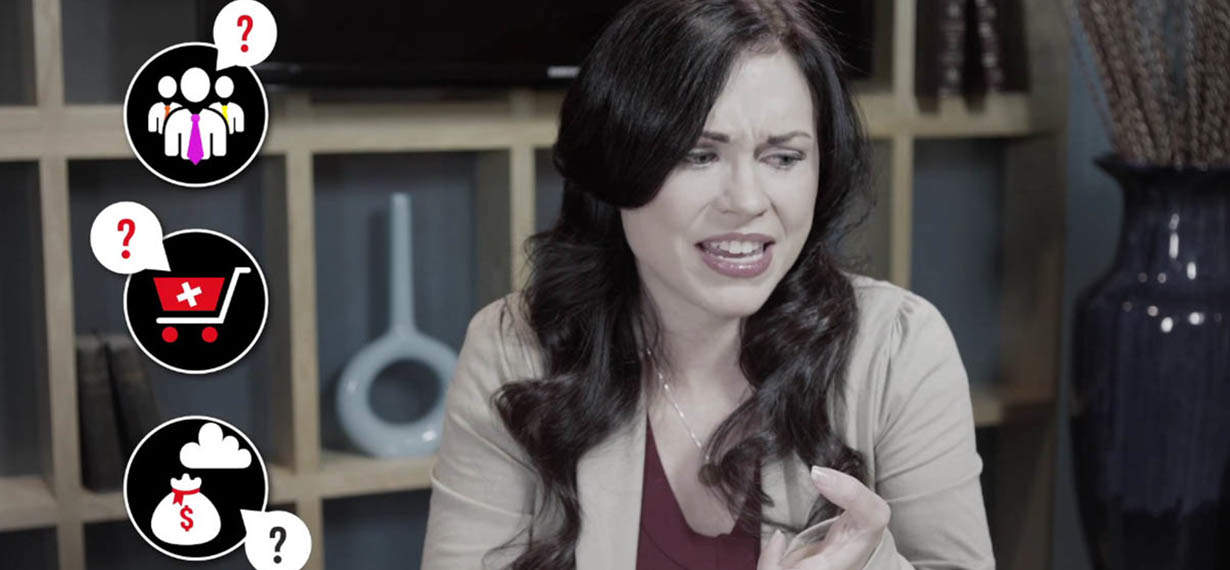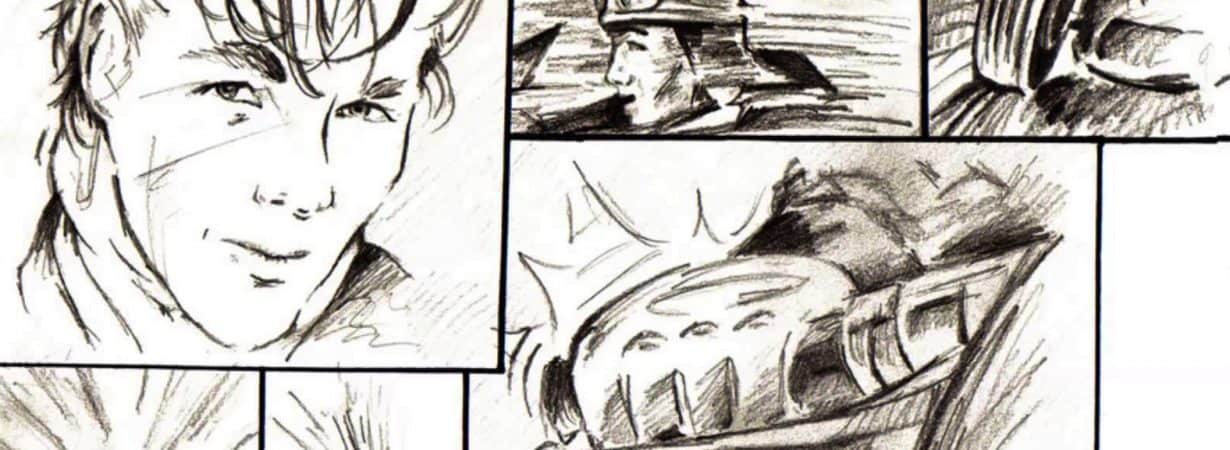
Motion Graphics
2D & 3D animation / titles / compositing / VFX
Motion Graphics includes 2D animation, 3D animation, Titles, Compositing and VFX, along with everything that comes with those disciplines. CLAi add creative and practical layers to a program (before, during or after the edit) by incorporating all of these disciplines to bring a project to life when that is what’s needed. It may be something as simple as a 2D sliding logo sequence at the start of a program, or a 3D bug that appears to stress a point, hiding a wire or building an explosion, it could be an entire 3D world to replace a green screen, or creating objects that are featured as real but that don’t quite exist yet (always a favorite with ads and kickstarters). Our tools vary with the project, but are built around Adobe Photoshop and After Effects, Fusion for compositing and 3DS Max for true 3 dimensional pieces.

I usually define motion graphics as everything that isn’t shot footage or animated elements with more than basic movement.
So the category includes text, titles, opening credits, bullet point material, numeric material, lower thirds and name/title graphics, illustrations, still photography and a whole host of other style and content elements that sit over footage or animation, or replace these on screen.
Some elements, like superimposed lower thirds, are pieces that we make which usually do include motion in the style which we tend to make them – but as this tends to be a simple slide in or slide out it can more often than not be done with a simple effect, like a push. Where this changes into animation is when it has to be created in another program and then rendered out and brought into the edit.
At CLAi we are believers in using text and graphics to help tell a story or explain a concept, and doing so in a way which allows it to become part of the overall image We feel that videos which use lots of bullet point text and the like are more often than not really creating speaker support slides, and there are better ways of telling a story than asking a viewer to read line after line of text on a screen that might be as small as an iPhone… so we take the time to explore and suggest alternatives, which may be in the video or may be links to pages on a web site. It’s been shown that video is processed 60,000 times faster by the brain than text – so better to take advantage of that when it is possible!
We produce most of our graphics outside of the edit system to get the highest quality and the most potential for controlling everything from a font to a smooth 8bit graduation. We primarily use Photoshop for this, but also kick into After Effects, Lightroom and Blackmagic Fusion for more complicated images and builds.

Wherever possible we ask for things like names and titles to be provided to us by the client as a Word document or the like, and Photoshop or Illustrator files for logos, so that we can be certain right off the bat that the spelling, shapes and colors are precisely as per your brand identity. We also try to make sure that any motion graphic content is signed off well before the edit, in case it has to go through layers of approval.
But this general category doesn’t end there – we include Interactivity within this area. Most, but not all, interaction related to video comes through links to the Internet. This is something that we have been looking at and including within our program design for some time now… and it really does add a whole new dimension to what can be done with video, particularly in the marketing and advertising realm, and through VR 360 video production.
At it’s simplest a video that is to be shown on YouTube or Vimeo can be programmed to open a web page when it finishes – you watch the commercial for a product and the web page allows you to place an order. This is pretty dull stuff, and I always feel that it is an intrusion because I don’t choose to leave YouTube and go to that page. What is much more interesting is when a single video can be linked to other videos and a web site to create a bigger picture from one aspect of a story.
For example we recently designed a series of 12 video modules, each running around 4 minutes long, about a large recycling facility. Access to the videos was primarily from the company’s web site, which features a large aerial shot of the entire facility. Overlaid on the moving graphic is a grid subdividing each area, with a title for these. Hovering over any area with your mouse highlights the outline, clicking on it takes you to the video for that region which opens and plays in an overlay window. At the end of the video the window closes and the viewer is able to choose another area to find out about. The final design will add hot buttons where text information about what is done there appears on the side of the image, and a “walking tour” where a suggested path through the facility and the videos is followed via a hot button path – each click on a hot button asking a multiple choice question and then providing the answer.
Obviously this is still a fairly basic design, as it relies on the web site to control the video and does so by standard devices like outlines and hot spots, but given that the main target audience is school children this is an acceptable level of sophistication. So far it has shown well, with a good take up, and most of the viewers watch all of the videos – which would definitely not have been the case with an hour long single documentary style piece.
A more sophisticated interactive style – although still computer based – comes from the creation of video that can be paused if a viewer moves their mouse over an item in the shot which has a small hot spot overlay, and information is shown about that item. Clicking on it opens a traditional web site window where the item can be bought or much more information can be shown. The commercial applications for this offer great opportunities for, say, a Victoria’s Secret fashion show or a cooking show sponsored by Amazon (where the viewer can, say, buy the ingredients for a meal and the cookware).
Of course, going the whole way is Virtual Reality 360 degree video, which is highly interactive by nature and can incorporate techniques for the viewer to, say, control his route through a movie or dictate the content completely, as well integrating text overlays and links. Much of this comes from game design, and given the need for additional viewing hardware, and the variety of these units, it is still an area that is pretty experimental.

Many years ago I completed a postgraduate degree at Goldsmiths, London in computer 3D animation. I quickly learnt that it was a slow, painful and frustrating process to make even a few seconds of photorealistic motion.
But it opened up a different way of seeing film and video imagery, particularly relating to camera and object movement and perspective, which have been enormously useful in all of the film and video projects CLAi have undertaken over the years. Perhaps more than that it created an incredible respect for those slightly crazy people who make their full time living in large scale computer aided 3D and 2D animation.
Today we don’t create this type of animated feature work in-house – it is far too time consuming and requires enormously powerful systems combined with constant research. But we do create animated 3D pieces to be used within “regular” programs that can be done on “regular” bigboy MacPro systems and software like Autodesk’s 3DS Max, and 2D animations that can be made in After Effects and Fusion. More often than not these are program opening and closing sequences, or pieces to explain how something works or comes together.
Animation adds a layer of quality and sophistication to many programs, but it has to be used carefully and appropriately to be more than eye candy for the viewer. It can also be very cost effective to produce, particularly when it is possible to start from an existing template or object design, where creating a 10 second zoomy, whippy, building sort of thing full of color or superimposed with running video might look like it cost several thousand dollars but only cost a few hundred in real life.
This is also the arena of the many “explainer” illustrated videos with a soundtrack… most of which bring the worst aspects of 1990s audiovisual design to life again, but using a cost driven manufacturing production line. When done well these can be a terrific alternative to traditional motion picture video, especially when the product or service doesn’t actually exist to show, but when done as a cost saving over traditional video they have been shown to be a major turn off and totally ineffectual marketing. It’s a tricky path to creating an effective video program, but one which can be made to work well, especially when combined with basic live action shots or library material.
Strangely enough, many of the original forerunners of this technique were found in music videos after the success of A-ha’s “Take Me On” back at the start of MTV in 1985, which used computerized pencil illustration mixed with live video, and “Money For Nothing” by Dire Straits that same year, using computerised color over image style animation. That MTV/VH1 doorway spawned so many of the animation techniques that we take for granted today – mostly in the music video area, where new and original were the key to many successes.
Other great animated videos of the time were Bjork’s “Wanderlust”, Elvis Costello and the Attractions with “Accidents Will Happen”, “Kandi” by One Eskimo, “Feel Good Inc” by Gorillaz, Radiohead and “Paranoid Android”, the rarely seen but wonderful “Love Rollercoaster” by the Red Hot Chilli Peppers, “Heartless” by Kanye West, “Starlight” by The Supermen Lovers, U2’s “Hold Me, Thrill Me, Kiss Me, Kill Me”, Daft Punk and “One More Time”, Home and Dry’s “Ghosts Are Dancing”, and, of course, all of those amazing stop animation videos by Peter Gabriel – of which “Sledgehammer” was probably the best known.
A fun past time if you are bored is looking at these with no volume and trying to remember who on earth the musical artists were…